-
Posts
433 -
Joined
-
Last visited
-
Days Won
3
Content Type
Profiles
Forums
Resource Library
Events
Gallery
Blogs
Store
Community Map
Posts posted by Lambeg man
-
-
On 29/11/2022 at 12:32 PM, Moxy said:
Glad I could help.
Walker Bros were based in Wigan, where I now live so I have always had an interest in what they produced. It's not really surprising there is not much info about, it's over 80 years since those railcars were built, and 60 years since Walker Bros shut down.
Hello again Moxy. Referring back to the top photo, I said Noticeable in the top picture is the absence of coupling rods (seen on the GNR Power Bogies) between the wheels of the power unit. On closer examination although there are no coupling rods, there appear to the eccentrics and lugs on both visible wheels for such a fitting. "Pagefield" is the district of Wigan where the Walker Brothers factory was located, correct? Many thanks again for your input. LM
-
In a previous question about the GNR,s AEC Railcars, I wrote:
Following on from the thread I recently activated on the above subject ("AEC Railcars"), I have in mind to produce a booklet intended to raise some funds for the RPSI "No. 171 Appeal".
The GNR 'AEC' Railcars were the 'trains' of my schoolboy years and I suspect of many older members of this forum. A lot of fresh information has recently been placed on the IRM thread and I myself have a good store of documentation relating to their building. While I may yet come back to this forum with further questions.
The book which is currently being composed has now been expanded to cover ALL GNR Railcars AND Railbuses. A separate book wholly about this subject will allow a larger canvas than Colm had for them in 'Diesel Dawn'. He by the way fully backs the project.
To this end, can I ask if anyone has any decent UNPUBLISHED photographs of any GNR Railcars or Railbuses (as GNR, CIE or UTA) that they would be prepared to forward for use in the book. With regard to payment for using such material, may I again point out that ALL profit from this project will go to the RPSI "171 Appeal". I have drawings of all the relevant vehicles.
-
 2
2
-
-
2 hours ago, Branchline121 said:
I know there’s been an awful lot of questions about railcars recently but I’ve just been wondering what’s the story with the Non-AEC/BUT railcars. I’m mainly talking about Railcar A and Railcar G, which don’t seem to be related at all. I’ve tried a search for them, but only photos have came up, and any info would be appreciated.
Railcar A - Built 1932. AEC* Diesel engine and mechanical transmission. Open saloon eventually seating 48 Third class in 3+2 layout. Diving cabs both ends.
Railcar B - Built 1932, Gleniffer* Diesel engine and electric transmission. Open saloon seating 40 Third class in a 2+2 layout. Driving cabs both ends.
* Both engines later replaced with Gardner products.
Railcar C (later C 1) - Built 1934. Gardner Diesel engine and mechanical transmission in a power built by Walker Brothers of Wigan. Coach section articulated to the power unit. Single cab at one end, so required turning after each journey.
Railcars 'C 2' & 'C 3' - Built 1935. Gardner Diesel engine and mechanical transmission in a power built by Walker Brothers of Wigan. Coach section articulated to the power unit. Single cab at one end. When introduced operated as a back to back 2-car unit, but with no multiple unit controls, each towed the other (dead) one in one direction. Split in 1937 and operated singly thereafter and like what was now C 1, required turning after each journey.
Railcars D & E - Built 1936. Single Gardner Diesel engine and mechanical transmission in a centre power unit designed by Walker Brothers of Wigan. Drive was to a single axle on the three axle power bogie, power being applied to the two other axles by outside coupling rods. Two large high capacity coach sections were articulated to the power unit. Driving cabs at each end.
Railcars F & G - Built 1938. Two Gardner Diesel engines each with its own mechanical transmission in a centre power unit designed by Walker Brothers of Wigan. Two axles on the power unit, each driven by one engine. Two large high capacity coach sections articulated to the power unit. Driving cabs at each end.
The war prevented any further GNR/Walker Brothers developments.
-
 5
5
-
-
2 hours ago, Irishswissernie said:
4 views from Graham Roose today First 2 at Connolly 1995.
I see that the 071 is with the NIR 'Enterprise' set. Out of interest may ask if it about leave or at this time was a CIE 071 used to release the NIR locomotive which is presumably at the station buffers?
-
7 hours ago, jhb171achill said:
BUT sets were "Banjaxed Underneath and Throughout"
How dare you Sir, how very dare you!
-
 1
1
-
-
This one is set the pre-mobile phone era. Yet another stag do, however this one much more local! The victim was once again a close work colleague, easily 15 years my junior and many of the others were not people I knew well. We attended a "Gentleman's Evening" (yes, strippers) at a venue in Norwich. In the course of the evening I became aware that the groom was being plied with 'Mickey Finns' and knowing him not to be a hard drinker like myself, watched his reactions.
I can say it here, because none of the parties involved would EVER visit this website!
The person spiking the groom's drinks was later discovered to have already commenced an affair with the bride! (Soap operas eat your heart out!)
Anyway, prematurely the groom is very drunk and throws up. I assist the door staff to get him a taxi (with a bin bag around him to stave of the vomit.) I go with him in the taxi to his address in the small village just outside Norwich where he was living. On arrival I ring the door bell. No reply. Cut a long story short, his finance has gone out for the night and there is no one at home. Slightly half cut I manage to climb up the back of his house and gain entry via a half opened upstairs window. I eventually get him indoors and up to his bed. I leave him with a basin beside his head, but he is totally out for the count.
Now I need to get home, to another village 8 miles away at 01.00 in the morning. I found a phone box and ordered a taxi. I got home at 03.00.
Pertinent to this tale, the said phone box had no telephone directory so I had to ring (192?) the old free 'Directory Enquiries' to get a taxi number.
In a subsequent debrief Paul thanked me for looking after him, but later said "How were you able to record the taxi number that Directory Enquiries gave you. Did you have a pen and paper on you?"
"Oldest trick in the book, as the operator gives you the number, breath over the cold kiosk glass and write the number in the condensation." (SIMPLES!)
-
 2
2
-
-
I would presume the Newry photo was taken from the front of the arriving Railcar seen in your other photo taken the same day.
-
 1
1
-
-
I was on a stag do in Krakow in Poland circa 2008. The groom and the others were work colleagues. I was by way the oldest person in the group. One of the party was a guy called Andy who I had worked for many years and who I got on with very well, though he was about ten years my junior. By the time of this stag do he had developed Type 1 diabetes. Furthermore he was still recovering from injuries he received as a pedestrian hit by a car and was not able to walk long distances. After a meal in a nice restaurant we all adorned to night club. By 01.00 in the morning I was feeling tired but too bluttered. Andy remarked that he felt the same way, so I suggested we both call it night and make our way back to the hotel which was not too far away.
We came out of the night club onto the main square in the centre of Krakow. I looked around and THOUGHT I recognized the way out of the square to the hotel. We set off under my assurance to Andy that I knew it was the right way. We walked for about an hour before being a darkened wood I realized I had gone seriously wrong. We needed to get back to the centre of Krakow but by now the local street lighting had been switched off. Fumbling around in the dark, I climbed a tree to try and make which direction the centre was. I could see lights away in the distance, so we set off that way. It took us just under two hours to get back to where had set off from, the nightclub in the main square. This was partly due to fact I was having to support Andy with my shoulder as he was in a bit of pain in his injured leg. At least in the centre, the street lighting was still on. I was totally knackered and Andy was by now in bad shape. Fortunately a very short distance away I could see a taxi.
I carried Andy to the taxi and placed him in the back seat. The driver looked around at us
I said to him, "I'm sorry but I do not speak Polish, but my friend is very ill. Can you help us please and take us to the HOTEL IMBUS."
He began gesticulating and talking in Polish.
"Please," says I "please take us to the HOTEL IMBUS."
The driver shrugged his shoulders, started the taxi and we set off...
Turning a corner off the square he drove another twenty yards and stopped the taxi... Right outside the HOTEL IMBUS...
I felt the least I could was to give him 10 zloties for his trouble...
-
 3
3
-
-
4 hours ago, jhb171achill said:
Weren’t they some sort of oasis tribute band
Yeah, I never cared much for the way John Lennon used to act as if he was Liam Gallagher...
-
 1
1
-
-
13 minutes ago, Patrick Davey said:
I had been looking forward to making this video
Superb Patrick, well done! LM
-
 1
1
-
-
2 hours ago, Moxy said:
Don't know if this is the same one,
Hi Moxy, you are a star! How I could not find that, I don't know. That is a brilliant piece of research. So the above is a vehicle that Walkers built in 1936 having seen what the GNR did with the power bogies they had supplied a year earlier.

Power units for ‘C 2’ and ‘C 3’ in the Walker Brothers factory in Wigan – Wigan Heritage Service
The above photo was published in Backtrack and credited to Wigan Heritage, but I've been unable to find it on their current website.
As to "First Diesel Railcar for Argentina made by Walker Bros.", it appears from the recording of the final destination for the Gardner-Edwards Railcar that was trialed on the NCC 3' gauge lines, that persons making the contemporary records had a vague knowledge of South America! I have read in different texts that the Gardner-Edwards Railcar went to Columbia / Peru / Argentina!
Agree with you regarding the gauge issue. Noticeable in the top picture is the absence of coupling rods (seen on the GNR Power Bogies) between the wheels of the power unit.
Many thanks again for your valuable assistance. LM
-
 2
2
-
 1
1
-
-
The following photo is from the Wigan Heritage website. It shows a Railcar built by Walker Brothers and it titled "First Diesel Railcar for Argentina made by Walker Bros." The caption reads "This photo was taken by my father, E.W.Woodcock. In addition to the description, it says on the back of the photo: "..at Pagefield Signal Box by permission of Messrs. Walker." There is no date given and a trawl of the internet looking for further info has drawn a blank.
The vehicle looks VERY similar to the 'C' type GNR articulated Railcars of the GNR (which Walkers built the power bogies for and Dundalk the bodies). If this photo predates 1935, then it would appear the concept of an articulated Railcar came not from the GNR, but from Walkers.

Any thoughts or further info from anyone?
-
 2
2
-
-
33 minutes ago, The Derry Road said:
Enjoy
Have done, many thanks for posting your pictures, especially those of INVER. LM
-
 2
2
-
-
3 hours ago, airfixfan said:
Good rare photo of Letterkenny 10 years after closure.
Agreed Jim. Pity "Erne" was gone by then! Played on it when we visited the yard in 1965.
-
20 minutes ago, airfixfan said:
Could be a Strabane local.
I think you'll find it is a Belfast service. Post 1958 the GN section of the UTA frequently deployed 'U' class locomotives on Belfast-Derry services, something they were not entirely suited to. Note also the "express" headlamp code.
-
 1
1
-
-
3 hours ago, Irishswissernie said:
Ex GNRI Victoria Bridge station 14 August 1959.
Hi Ernie, Great photo. Am I right in thinking it is a 'U' class 4-4-0? LM
-
8 minutes ago, Galteemore said:
It’s an outstanding book.
That’s good news for me if anything! I have heard a few good things about this book, meant to buy it ages ago…must be some content in it
I trust you are also a subscriber to New Irish Lines. The Editor Alan O'Rourke (via the original author Michael McMahon) has issued in recent editions of New Irish Lines pages and pages of additional drawings that did not make it into the book for reasons of space. LM
-
 2
2
-
-
47 minutes ago, airfixfan said:
Looking forward to it will be helping man Inver of course!
Hi Jim, were you aware that Steve Flint gave "INVER" a good plug in the current Railway Modeller?
-
-
22 minutes ago, airfixfan said:
63 to 65 had standard MPD cab ends as above.
Except that they were left hand drive as opposed to right hand drive (as seen above) in all the other MPD's.
-
On 20/11/2022 at 12:51 PM, Darius43 said:
Question. It’s hard to find clear photos of the bogies of MPDs 63-65. Were they like first generation BR DMUs or similar to the earlier MPDs?
I understand they were all the same.
No. 62

No. 43

-
 6
6
-
 1
1
-
-
28 minutes ago, jhb171achill said:
Those things had completely different body details and (especially) window spacing and shapes.
Hi JHB, I wasn't suggesting it was one of the former GNR Railmotors, rather that there is a history (probably on quite a few railways) of Railmotor bodies/chassis being recovered for further use having had the unsuccessful (in nearly every case!) gubbins removed.
In an effort to try and resolve this I am putting the original drawing up here as maybe someone will spot something I've missed.
-
 2
2
-
 1
1
-
 1
1
-
-
On 20/11/2022 at 2:21 PM, jhb171achill said:
I wouldn’t think there was even the remotest likelihood of anyone thinking if a new-build railmotor at that stage
Have been thinking... The GNR had Railmotors built in 1906 that were by 1913 "converted" into ordinary carriages. These in turn lasted into the 1950's. I go back to the marking on the drawing "KERR STUART CONVERSION". This suggests it was "converted" from something else into a carriage. So the possibility is a second hand redundant Railmotor chassis with engine removed? But then why go the shipping expense of basically buying a heap of scrap and bringing it to Ireland? One other thing, the drawing was produced by Dundalk Works in 1936, which is not to say the vehicle was actually built there. But then any purchase of a 'foreign' vehicle by the GNR in 1936 would surely have been noted by now?
-
1 hour ago, jhb171achill said:
I wouldn’t think there was even the remotest likelihood of anyone thinking if a new-build railmotor at that stage. Way more likely it’s been intended to be towed - perhaps.
Yes I would agree. It is therefore more likely to have been a coach chassis.
1 hour ago, Galteemore said:ad a non-standard chassis or underframe in stock which could be used for a cheaper build. This may not even have been an old Railmotor chassis, of course. KS were also, apparently coachbuilders as well as loco builders. So there are a number of possibilities as to what it might have originally been intended for.
See above. I wonder if the GN Minute Books might reveal something. New coach building had to be approved by the Board. Though the coach was built in 1936, had the chassis been acquired (by whatever means) in say 1932 for some project which the Board initially approved, but it then got kicked into the long grass when the post strike two year moratorium on new carriage building began. As all GNR carriages were usually planned about a year or so before actual construction, perhaps the design for this "planned" one was drawn up in 1932 to be built in 1933? This would explain why it was built with a wooden panelled body a year into the "steel" era.
-
 1
1
-
 1
1
-
.png.c363cdf5c3fb7955cd92a55eb6dbbae0.png)
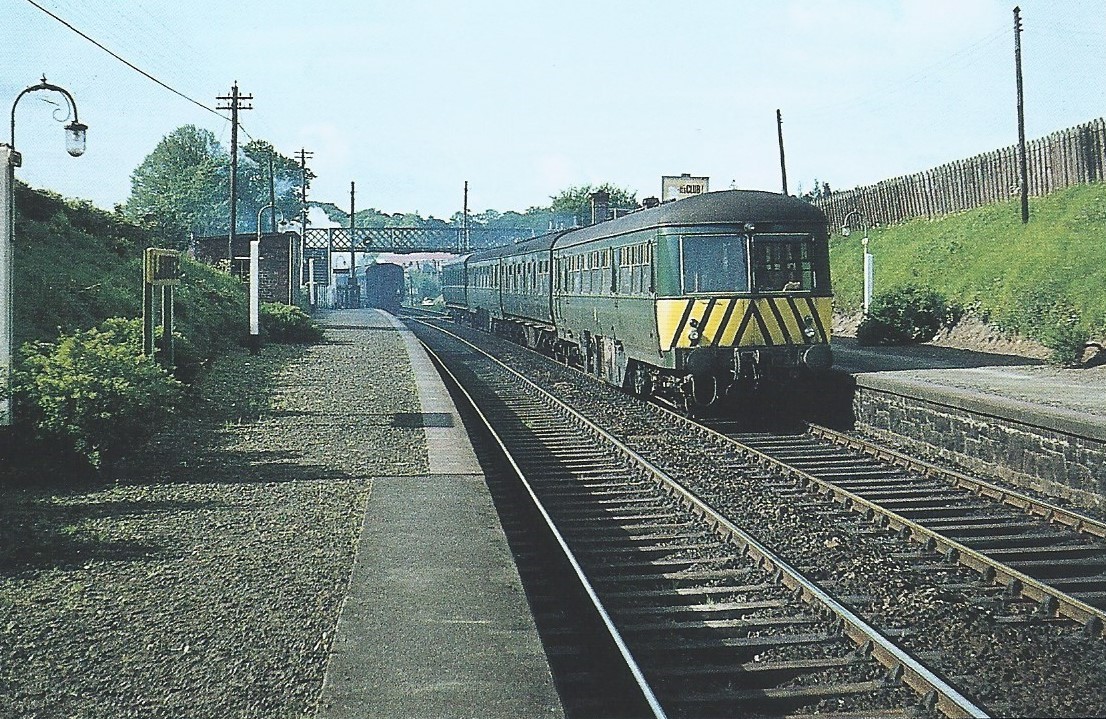
.thumb.jpg.619b7e43fcb01ddf7c110aacc1ea31d3.jpg)
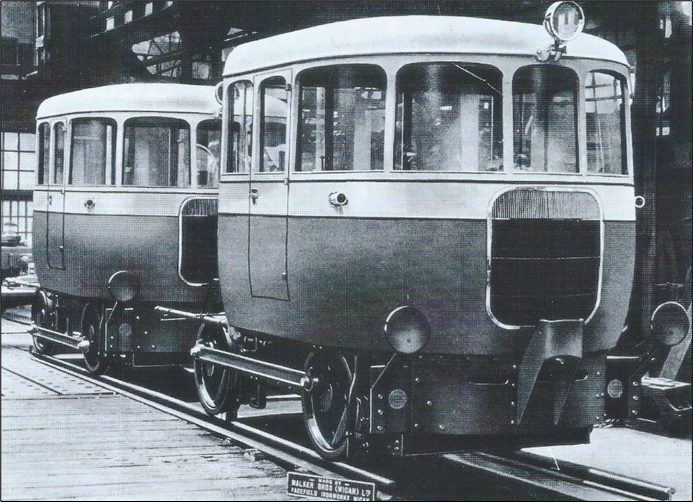

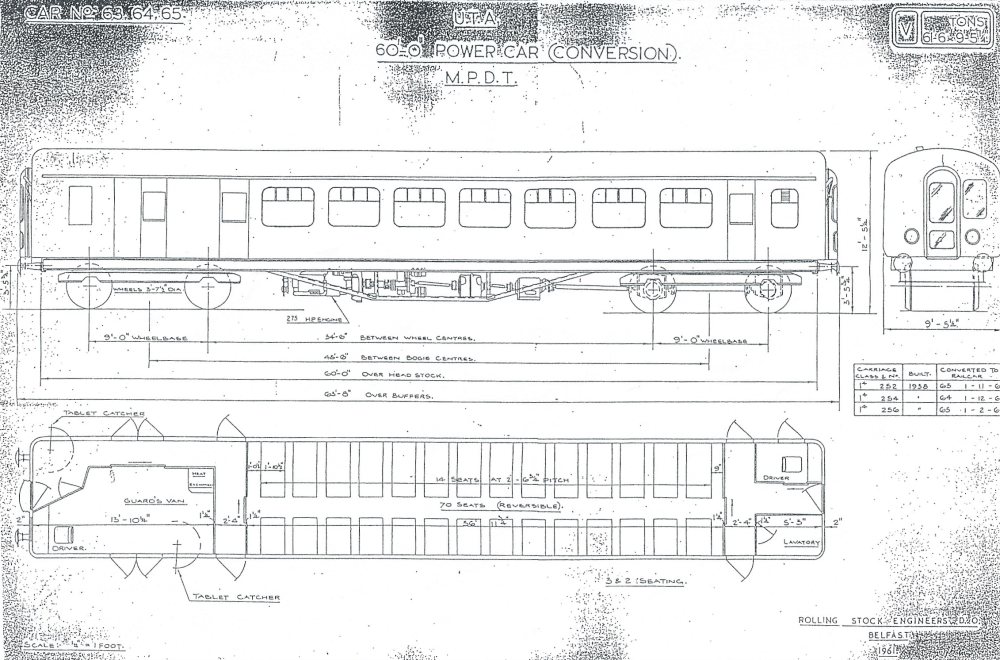
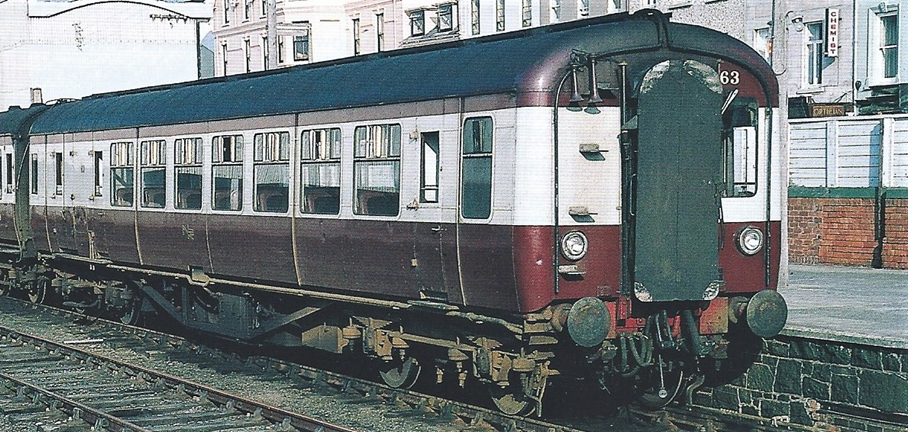
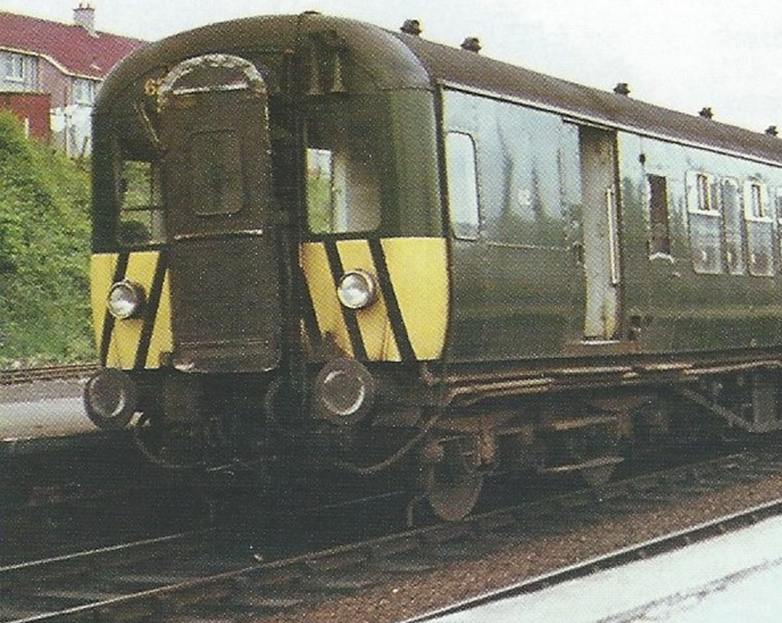
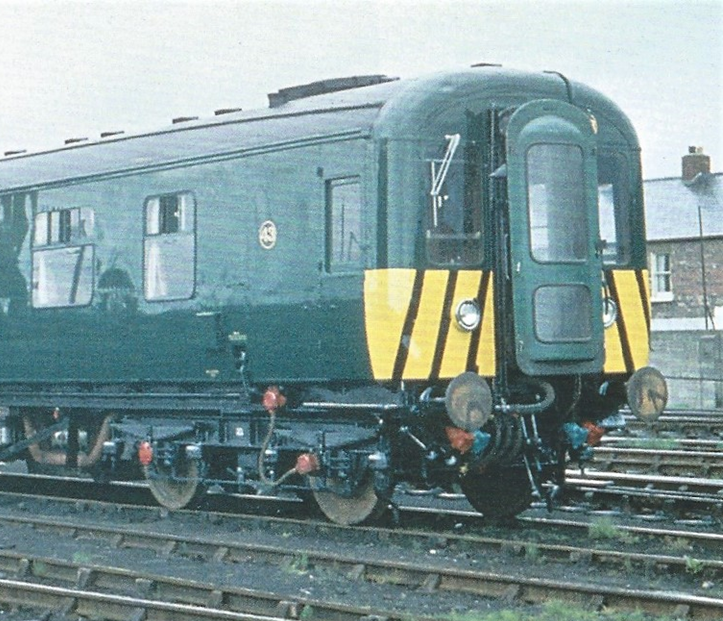
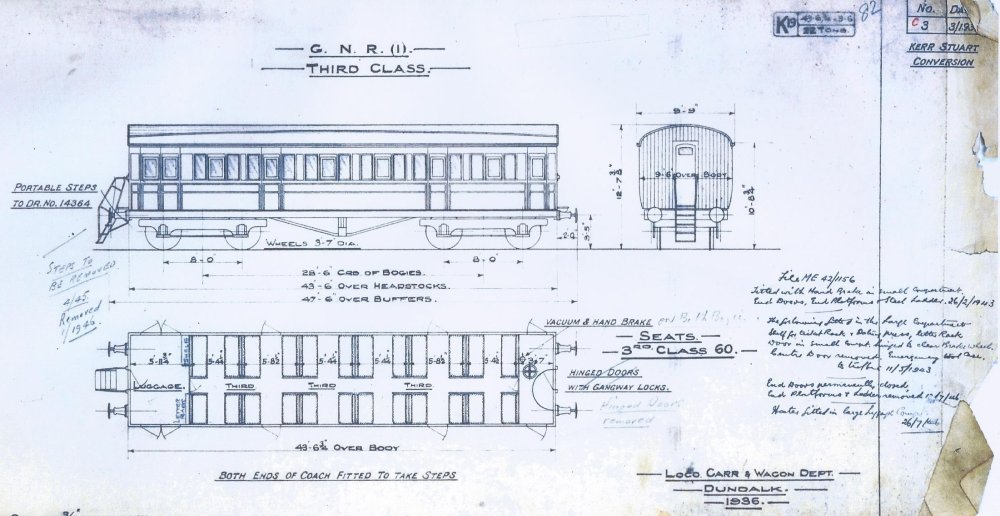
Mike Morant Collection Irish RailwayPhotographs
in What's On?
Posted
A couple of GNR gems in this selection. Note the "Royal" Saloon from July 1953 (GNR No. 50) sitting behind the picture of the Crane Tank engine. Also the one showing a VS shunting into the centre roads at Amiens Street with a 'P' bogie van behind it, to the left of the picture is the CIE 'AEC Railcar fitted trailer coach which was then in use as the Belfast-Cork Through Coach. Shadows suggest this is mid day so the the VS is making up the 14.30 Dublin-Belfast train while the CIE coach (arrived 12.45) is awaiting transfer over to the CIE lines.